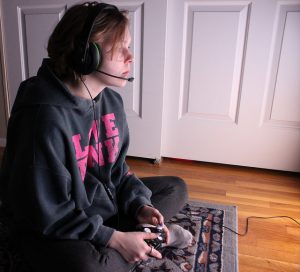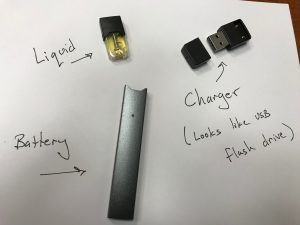One of the most valuable tools I’ve seen in talking to teens about where they are in life now, and where they will end up, is the “Life Hike” from one of the workbooks I mentioned in my last blog. Aspire describes in Chapter 1 on page 8 (LINK), how life is like a series of mountains to climb, with each mountain representing a different age, beginning with 1-15, 15-30 and so on. Can you imagine  having a conversation with your teen about transitioning from “dependence” (on you!) and beginning to gain more independence? I wish I’d had this tool to help me talk through this stage of life with my daughters! Take a look at the above link, and perhaps draw out on a piece of paper the 6 “mountains,” asking him or her to put a mark on the spot “where you are now.” Then ask, “How much of your life is behind you, and how much is ahead?” and “Which mountain would you say represents the most important period of time for you to be thinking about now, and why?”Where they are now is at the precipice of young adulthood…where they will be increasingly responsible for these decisions. This activity can be done to help a young person realize that all of these critical decisions are still ahead, and while the past is important, it’s past! The decisions he or she will face in these next few years have the power to set the course for the rest of life…including those goals we talked about last week that they might have for themselves!
having a conversation with your teen about transitioning from “dependence” (on you!) and beginning to gain more independence? I wish I’d had this tool to help me talk through this stage of life with my daughters! Take a look at the above link, and perhaps draw out on a piece of paper the 6 “mountains,” asking him or her to put a mark on the spot “where you are now.” Then ask, “How much of your life is behind you, and how much is ahead?” and “Which mountain would you say represents the most important period of time for you to be thinking about now, and why?”Where they are now is at the precipice of young adulthood…where they will be increasingly responsible for these decisions. This activity can be done to help a young person realize that all of these critical decisions are still ahead, and while the past is important, it’s past! The decisions he or she will face in these next few years have the power to set the course for the rest of life…including those goals we talked about last week that they might have for themselves!
Should I be concerned about Fortnite?
 Fortnite is the game every teen is talking about. It’s a multi-player shooter survival game (Mac, PlayStation 4, Windows, Xbox One, IOS app, and soon on Android), with free and paid versions. The obvious violence (it’s about killing with weapons after all) is not graphic–no blood or gore. It is “cartoonish” rather than realistic. No sex, no nudity, although the bodies of the female characters are exaggeratedly curvy. One article explains why it’s so popular with kids: “Well, it’s free, it’s fun and it has a very silly, offbeat sense of humour. While PUGB has a serious, realistic visual style, Fortnite: Battle Royale has very bright, almost cartoon-like graphics as well as loads of ridiculous items and costumes, such as space suits and dinosaur outfits. You can also pull a variety of dance moves during the game, and some of these have taken on a cult appeal in schoolyards around the globe.”
Fortnite is the game every teen is talking about. It’s a multi-player shooter survival game (Mac, PlayStation 4, Windows, Xbox One, IOS app, and soon on Android), with free and paid versions. The obvious violence (it’s about killing with weapons after all) is not graphic–no blood or gore. It is “cartoonish” rather than realistic. No sex, no nudity, although the bodies of the female characters are exaggeratedly curvy. One article explains why it’s so popular with kids: “Well, it’s free, it’s fun and it has a very silly, offbeat sense of humour. While PUGB has a serious, realistic visual style, Fortnite: Battle Royale has very bright, almost cartoon-like graphics as well as loads of ridiculous items and costumes, such as space suits and dinosaur outfits. You can also pull a variety of dance moves during the game, and some of these have taken on a cult appeal in schoolyards around the globe.”
I always urge parents to check out games, videos, etc. on Commonsense Media, and I also found a Good Morning America video discussing the game, its addictive qualities and how to set limits…things most parents are concerned about.
You’ve Heard of Vaping, but What about Juuling?
You may have already received an alert from your child’s school about a new trend. High school and middle school social workers are seeing sharp increases in the use of e-cigs that look like common products that don’t raise the suspicions of parents or teachers.
A report by CBS Chicago (VIDEO
 ), discussing the trend in area schools, including suburban schools, says: “Some devices look like flash drives and recharge plugged into a laptop. The devices are smaller and easier to hide, and it seems less like smoking real cigarettes. ‘It’s not as smelly, or it’s marketed with fruity flavors or sweet dessert-type flavors,’…. But many of the sweet liquids still contain nicotine. One of the most popular brands now, Juul, says on its website the amount of nicotine in one pod is equal to a pack of cigarettes. A 2016 Surgeon General’s report found nicotine exposure during adolescence can be addicting and can lead to the use of traditional cigarettes and drugs like marijuana.”
), discussing the trend in area schools, including suburban schools, says: “Some devices look like flash drives and recharge plugged into a laptop. The devices are smaller and easier to hide, and it seems less like smoking real cigarettes. ‘It’s not as smelly, or it’s marketed with fruity flavors or sweet dessert-type flavors,’…. But many of the sweet liquids still contain nicotine. One of the most popular brands now, Juul, says on its website the amount of nicotine in one pod is equal to a pack of cigarettes. A 2016 Surgeon General’s report found nicotine exposure during adolescence can be addicting and can lead to the use of traditional cigarettes and drugs like marijuana.”
Maybe it’s time to take a closer look at that flash drive your son has on his nightstand, or the Sharpie in your daughter’s backpack. And, as always, talk to your kids about the pressures and risks they face.
Sexual Harassment Common Among Teens
A new survey of almost 2,000 middle and high school students found that “56 percent of the girls and 40 percent of the boys said they had experienced at least one incident of sexual harassment during the school year.” And that’s just one 9-month school year. It isn’t unreasonable to assume that over a period of 6 or 7 years (middle school and high school) virtually all of our teens experience sexual harassment in some form. What does this harassment look like? It could be anything from physical groping, to crude comments, to being confronted with unwanted sexual images, to being the subject of unwelcome sexual rumors.
The article discussing the research also included the report’s recommendation that “all schools should create a sexual-harassment policy and make sure it is publicized and enforced. It said schools must ensure that students are educated about what their rights are…with special attention paid to encouraging girls to respond assertively to harassment since they are targeted more often than boys.” The students themselves wished that there were a way to anonymously report incidents of sexual harassment. A proactive step that you as a parent could take, might be to call your student’s school to see if any policies or procedures are in place to handle incidents of sexual harassment…and to find out if the students are both educated about their rights, and informed about how to report such incidents.
Can teens multitask?
You would think, the way that they juggle cell phones, internet and TV…all while doing homework, that the answer would be “Yes.” But if you were wondering how it is that they can’t both clear the dishes AND remember to take the laundry up the stairs (while walking right around the basket), you might say “No.”
The actual answer is closer to “No,” but it really depends on your son’ or daughter’s age. An interesting study, linked right here, sheds some light on what’s going on in teen brain development, and when we can expect things to get better. The article says, “The ability to remember multiple bits of information developed through age 13 to 15, the study found. But strategic self-organized thinking, the type that demands a high level of multi-tasking skill, continues to develop until ages 16 to 17.” No answers, though, on how to manage parental frustration while we are waiting!
Flash Mob Idea Co-opted by Young Criminals
Cultural phenomena can spring up quickly, and flash mobs are a case in point. Picking up in popularity in recent years, flash mobs are described on Wikipedia as a “group of people who assemble suddenly in a public place, perform an unusual and pointless act for a brief time, then disperse. The term flash mob is generally applied only to gatherings organized via telecommunications, social media, or viral emails.” Up until very recently, we would just consider this good, clean fun.
Unfortunately, what used to be an innocent form of entertainment for young people, has taken an ugly turn. Crime-by-flash-mob has hit Chicago and other urban centers, and could be coming to the suburbs. This article describes behavior that has given “flash mobs” a bad name this summer.
In reading the above-linked article, I was reminded of how important the social group is to our teens…and how influential. According to Scott Decker, a professor of criminology at Arizona State University, “Over 90 percent of crimes committed by young people are done so in a group.”
Whether its sexual activity, drinking, or criminal flash mobs, it’s still imperative to help our teens think through the consequences of getting caught up in something dangerous or criminal. It was sound advice when we heard it from our parents, and it’s still something our teens need to hear: “Don’t do something just because it seems like everybody else is doing it.”
How to get your teen to think smoking is gross
In reading about two new studies showing yet more consequences to second-hand smoking, I stumbled across a strategy for parents to use to keep their kids from wanting to smoke in the first place. The article mentioned that kids who describe the smell of cigarette smoke as “gross” or unpleasant, were 78% less likely to start the habit. This is important because, as the article points out, “the National Center for Addiction and Substance Abuse found that nine out of 10 people who meet the clinical criteria for substance abuse began smoking, drinking or using other drugs before they turned 18, and that this is a big concern in teens as they are more likely to try risky things while their brains are still developing.”
So besides stopping smoking if you are a smoker yourself (obviously beneficial to your children), how can we parents create an “eeewww” reaction in our children? Click here for an article about the ugly effects of smoking from kidshealth.org. You could have your teen sit and read it with you for a mini-teaching session which includes a picture of diseased lungs, and the list of “gross” things about smoking, like having bad skin, bad breath, and bad-smelling clothes and hair. We all know how vain teens can be, and appealing to their vanity might be quite effective!
No common sense about drinking
Do you ever wonder just how “common” common sense is? We wonder how it is that there is so much obesity among our youth. But all they ever see is super-sized meals. Even I was surprised to hear that a reasonable portion of meat (one that won’t make you gain weight) is about the size of a pack of cards. Young people see adults getting a daily Starbucks, and don’t realize that their part-time income from a fast food job can’t support that level of spending if they also want to save for college. What if we told them that they can make a quality cup of coffee at home for about 25 cents (including creamer and sugar).
And then there’s drinking. A study of 2,544 teens found that “Downing five or more alcoholic drinks nearly every day isn’t seen as a big problem” by 45% of them! Maybe our kids need a reality check. Maybe it’s our job to impart a little common sense. When one in three 8th graders drinks, and one in five teens binge drink, it’s time have a talk. You can start this way: “I know that as you get older, some of your friends [kids in school] are going to drink alcohol…”
Here is more about drinking from Mothers Against Drunk Drivers: Link to Statistics
Dirty dancing at MY kid’s school?
An article in Education Week says, “It looks like sex, but it’s dancing. It’s called freak dancing, and teenagers of all types are freaking at middle and high school events across the country. And though pairs of grinding pelvises filled the floor at a Valentine’s Day dance at a suburban Washington public high school, it might well have been the tamest freaking on record: The kids stayed dressed and on their feet. At other schools, blanched administrators say, a girl might be on all fours, with one boy’s pelvis pressed into her face and another’s pressed into her bottom. They see boys on their backs with girls spread-eagled over them; girls bent forward with boys’ hips thrust into their backsides. Students know it by different names in different towns: freaking, grinding, jacking, booty dancing, the nasty. They do it to hip-hop and rap.”
After hearing of more and more schools across the nation that are canceling dances, insisting on contracts, writing firm letters home to parents, etc., I am feeling more than a little sick at what our teens are doing at dances these days. As someone with fond memories of high school dances, and the “romance” and fun of acting grown up with a pretty formal gown, a corsage and a handsome date, I am grieved at what is happening at today’s middle and high school dances. And some teens are also pushing back. See what one Colorado teen wrote to her peers in this high school newspaper article.
So, I’m curious. Parents, ask your kids if their friends are doing this kind of dance. Is it true that “everybody’s doing it”? Is this the new normal? I’d love to hear what your kids are telling you.
Alcohol+Teens=Trouble
It’s summer, and party time for many teens and college kids. While our society seems to have done a pretty good job getting the message out not to drink and drive, we’re not so good at making the connection clear about alcohol and sexual behaviors. A page you might want to share with you teen (or better, talk over) is Tips For Teens: The Truth About Alcohol from the Department of Health and Human Services.
In addition, these facts are enlightening:
- Using alcohol (as well as cigarettes, marijuana and other drugs) greatly increases the risk of early adolescent sexual activity. (Journal of Marriage and Family, 1990)
- Among the 33.9% of currently sexually active high school students nationwide, 23.3% had drunk alcohol or used drugs before their last sexual intercourse. (CDC Youth Risk Behavior Surveillance, 2005)
- While “date rape drugs” are something to be aware of, it is more common for victims to be caught off guard because of alcohol or drug consumption. Analysis of a sample of urine drug tests of sexual assault victims demonstrated that alcohol was present in 63% of the victims, marijuana was present in 30% of the victims and “date rape” drugs…in about 3% of positive samples. (Journal of Reproductive Medicine. Vol. 45. 2000)
- So that there not be any confusion about consent, it needs to be clearly taught (particularly to males as the usual perpetrator) that the law considers someone who is inebriated as unable to consent. Thus, it is sexual assault or rape when there is sexual contact and one of the parties is drunk or under the influence of drugs.
